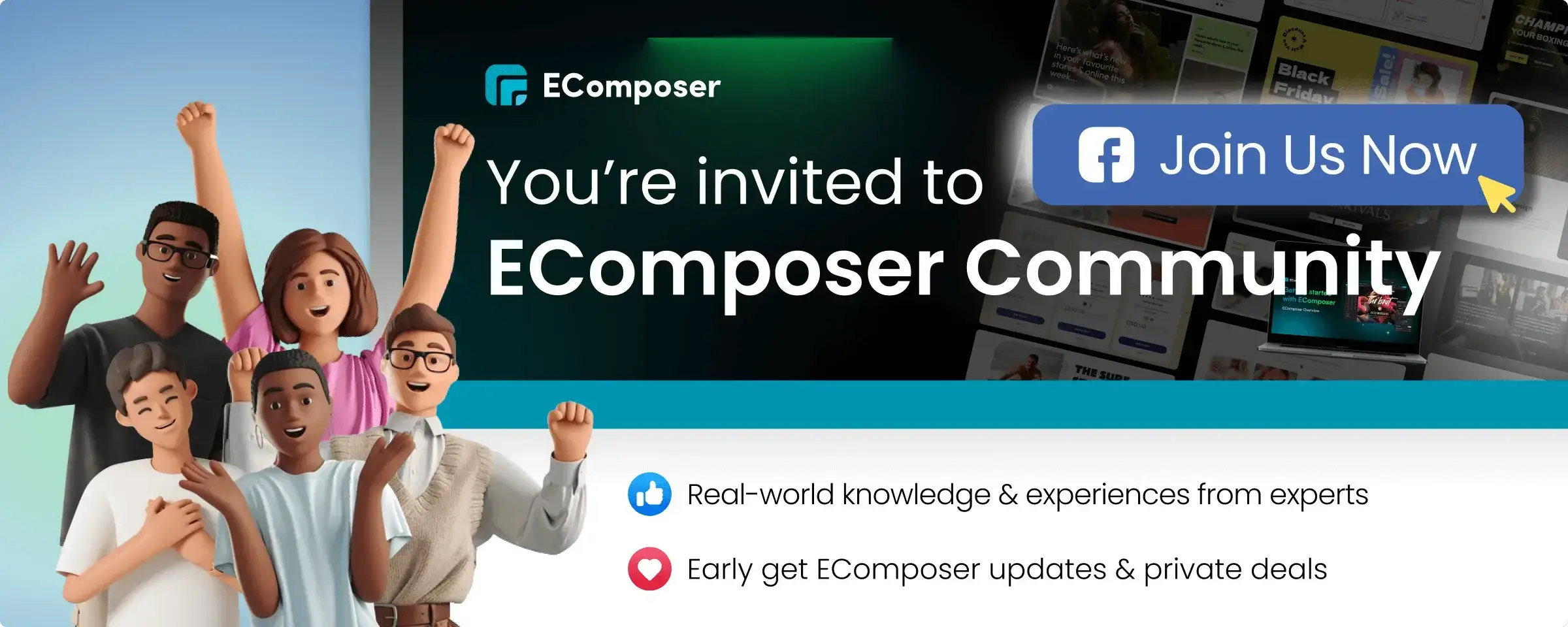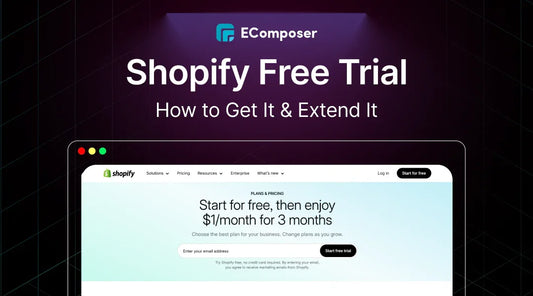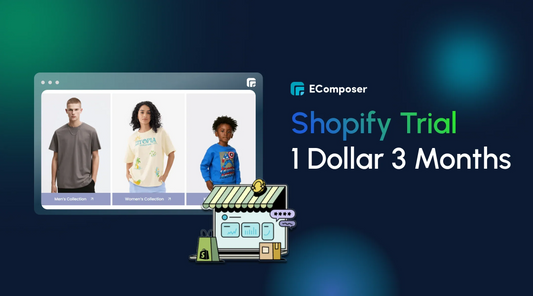How to Scale Your Shopify Store Effectively (2025 Guide)

Table Of Contents
The main area to focus on to scale your Shopify store is to develop a firm foundation, optimize operations, optimize marketing, and more, working on customer lifetime value. Some of these strategies are to enhance focus on SEO, integration of paid and organic marketing strategies, employ insights gained on customers to drive growth, as well as automation tools that will push productivity.
Your Shopify business is getting sales. That’s amazing! There is only one thing, though: being big feels a bit… nasty. When you ponder how to manage increased orders without having to work 24/7, then you are at the right place. My mission is to ensure that you grow your Shopify store in an intelligent manner. We will find out the easy Shopify growth tips that can help you scale your Shopify store. It is time to make growth exciting.
Are You Ready to Scale? - Checklist for scaling readiness
Before scaling your Shopify store, you need to ensure your foundation is solid. Beginning with the thorough list of checkpoints: cleans up webpage and product pages, simplifies sales cycle, improves marketing methods and acquisition strategy, and reinforces customer support and retention strategies. Address both back-of-store and front-of-store aspects so that your store can serve more traffic and quantities.
After that, answer the three most important questions:
Are your sales consistent?
I’m talking about a predictable, steady flow of orders, not just a random good month. If your revenue is still a rollercoaster, our first job is to stabilize that ride.
Is each new customer profitable?
In short, does it cost you less to get a customer than they will spend with you over time? If not, spending more on ads will just drain your bank account faster. We need profit-first scaling.
Could you handle triple the orders tomorrow?
If you went viral overnight, would it be a dream come true or a fulfillment nightmare? Your inventory and shipping process needs to be ready for a sudden spike in demand.
If you can say "yes" to all three, then congratulations. Your engine is solid. Now, let’s talk about how to win the race.
Foundation Before Scaling: Optimize for Conversion & Profit
Before scaling, ensure your store is fast and seamless, boost Average Order Value with bundles and upsells, and automate follow‑ups like abandoned carts and win‑back emails to drive repeat sales.
1. Make Your Store Effortless to Use
A slow or confusing store kills sales. Your goal is a smooth, fast experience, especially on mobile. Think of it this way: a one-second delay in page load can slash conversions. Speed up your site and ensure the path from landing page to checkout is incredibly simple. A clean, fast store is step one in any Shopify store optimization checklist.
2. Increase Your Average Order Value (AOV)
The easiest way to make more money is to sell more to the customers you already have. This is called Shopify AOV optimization.
- Product Bundles: Group related items together for a small discount. (e.g., "Get the full skincare kit and save 15%!")
- Upsells: Offer a better, premium version of the product they're looking at.
- Post-Purchase Offers: Use a one-click upsell after the customer has paid. This is pure profit with zero friction.
3. Put Your Follow-Up on Autopilot
Most visitors won't buy on their first visit. Don't let them forget you! Set up these essential email & SMS automation flows:
- Abandoned Cart: Remind shoppers what they left behind. This is a goldmine.
- Welcome Series: Greet new subscribers with a story and a special offer.
- Customer Thank You / Win-Back: Turn one-time buyers into repeat fans.
Once these systems are running, your store will automatically convert more visitors and generate more revenue 24/7. Now, you're ready to add more fuel to the fire.
Proven strategies to scale your Shopify stores
To successfully scale a Shopify store, start by establishing a solid foundation with a high‑performing website, optimized product pages, and well‑planned marketing efforts. Focus on strategies like SEO, paid ads, email campaigns, and influencer partnerships to drive traffic and sales. Equally important is boosting customer retention through loyalty programs and outstanding customer support, ensuring long‑term, sustainable growth.
Here’s how you can strategically grow your Shopify store.
1. Optimize Operations and Product Mix
Before you can handle more customers, your internal systems must be flawless. This prevents growing pains from turning into business-ending failures.
Master Your Fulfillment Process
- Your ability to ship orders quickly and accurately is paramount. As you scale your Shopify store, manual fulfillment becomes your biggest bottleneck.
- Consider outsourcing to a 3PL (Third-Party Logistics) partner. They handle all your warehousing, picking, packing, and shipping, freeing you to focus entirely on growth and marketing.
Automate Everything You Can
- Use Shopify Flow (for Shopify Plus) or other automation apps to create rules that run your business in the background.
- This is the core of smart Shopify fulfillment automation. Automate tasks like tagging high-value customers, flagging risky orders, and sending re-order reminders for low inventory.
Elevate Your Product Visuals
- Your product page visuals do the selling for you. Since customers can't touch the product, your images and videos must create that tangible experience.
- Invest in professional, high-resolution photos and, most importantly, add a short, high-quality product video or 3D model to every product page to dramatically increase conversion.
Perfect Your Product Descriptions with SEO
- Write clear, benefit-driven copy that not only persuades customers but also includes relevant keywords to improve search engine ranking.
- Think about the questions a customer would ask ("Is it machine washable?", "What are the dimensions?") and answer them directly in your description to reduce friction.
Systemize Cross-Selling and Upselling
- This is the most direct path to Shopify AOV (average order value) optimization. Implement apps like EcomRise: Upsell & Bundles to make intelligent product recommendations.
- Don't just sell products; sell solutions. Create bundles that solve a complete problem for your customer, offering a slight discount for buying the kit.
Implement High-Conversion Post-Purchase Offers
- Use a one-click upsell app to present a special offer to customers after they have completed their purchase.
- Because their payment information is already entered, it's a frictionless way to add to their order and is one of the most profitable tactics available.
2. Enhance Customer Experience (CX) & Increase Lifetime Value (LTV)
The most profitable businesses are built on repeat customers. A great experience is what turns a one-time buyer into a loyal fan, massively increasing their customer lifetime value (CLV).
Obsess Over Website Speed and Usability
- A slow, confusing website is the number one reason for lost sales. Your store must load in under three seconds.
- Use Google's PageSpeed Insights to diagnose and fix issues. Remember that over 70% of traffic is mobile, so your experience must be flawless on a phone.
- Explore proven ways to speed up your Shopify store and enhance customer experience.
Systemize Customer Service
- As you grow, you can't manage support from your inbox. Use a helpdesk tool like Gorgias or Zendesk to centralize all customer communication.
- These platforms consolidate email, live chats, and social media comments to one dashboard so your team has a chance not to miss any queries and has an easy time responding.
Power up irresistible trust with feedback and user-generated content
- Establish an automatic request to leave a customer review via the use of an app such as Judge.me or Yotpo.
- These reviews and user-generated photos (UGC) should proudly be displayed on your product pages.
- This social proof is often the final nudge a potential customer needs.
Leverage Personalization for Retention Marketing
- Stop treating all your customers the same. Use email segmentation to create groups based on purchase history (e.g., first-time buyers, VIPs, customers who bought a specific product).
- Send these groups personalized product recommendations and tailored offers that feel relevant and exclusive. This is effective retention marketing.
3. Invest in High-ROI Marketing Channels
With a solid foundation, you can now confidently reinvest profits into marketing that will fuel your growth.
Execute Profitable Paid Advertising
- For most stores, Meta Ads (Facebook/Instagram) and TikTok Ads offer the fastest path to new customers.
- The key is to test relentlessly, test your ad creatives, your audiences, and your offers. Monitor your ROAS (Return On Ad Spend) daily and only increase the budget on campaigns that are proven to be profitable.
Automate Your Email & SMS Marketing
- Your email and SMS list is an asset you own. Use a tool like Klaviyo to build automated flows that generate sales 24/7.
- Your non-negotiable flows must be: a welcome series for new subscribers, a cart abandonment series to recover lost sales, and a post-purchase series to encourage reviews. This is the heart of Shopify store marketing automation.
Develop a Long-Term SEO and Content Strategy
- While ads produce quick results, SEO builds a long-term, free source of traffic. Optimize all of your site pages with semantic keywords.
- Build a blog around long-tail keywords your customers are searching for, such as "how to scale a Shopify store to 6 figures." Each article is an asset that can bring in organic traffic for years.
Explore the SEO checklist to get more traffic to your Shopify store.
Engage Communities with Influencer & Social Media Marketing
- Partner with niche influencers that have followers who really trust them. One legitimate suggestion and stamp of approval can be more effective than an ad campaign running on a mega scale.
- Build your loyal community by carrying on contests, sharing user content, and interacting with your followers in your social channels.
4. Leverage Tools, Data, and Automation
Scaling requires leverage. The right technology will automate tasks and provide crucial insights. These are the best tools to scale Shopify business operations.
Choose Your Core Shopify App Stack Wisely
Your tech stack should solve problems, not create them. Key categories to invest in include Store Design (EComposer), Upsell & Bundles (EcomRise)Loyalty & Reviews (LoyaltyLion, Yotpo), Marketing Automation (Klaviyo), Customer Support (Gorgias), and Shipping (ShipStation).
Track Your Vital Metrics Like a Hawk
- Data drives every scaling decision. Use a profit analytics tool like Triple Whale or TrueProfit to go beyond Shopify's basic reports.
- Track your three most vital metrics at all times: CAC (Customer Acquisition Cost), CLV (Customer Lifetime Value), and AOV (Average Order Value).
Automate Your Daily Workflow
- Beyond marketing, automate your internal processes. Use tools like Buffer or Later to schedule all your social media content in advance.
- The goal is to eliminate as many manual, repetitive tasks as possible to free up your time for high-level strategy.
5. Scale Beyond the Store (Advanced Scaling Activities)
Once your core store is a well-oiled machine, it's time to think bigger. This is how you build a resilient, multi-faceted brand.
Diversify with Multi-Channel Sales
- Reduce your reliance on your website by selling where your customers already are. Expand your presence to major marketplaces like Amazon, Walmart, and TikTok Shop.
- Use Shopify POS to explore physical retail through pop-up shops or events, and create a wholesale program for B2B buyers.
Go Global with International Expansion
- Tap into a worldwide customer base using Shopify Markets. This tool helps you manage the complexities of selling globally, including setting local currencies and calculating duties.
- Your simple Shopify international scaling guide is to start small: launch in one or two new countries with high eCommerce adoption before expanding further.
Create Predictable Revenue Streams
- Give your existing, loyal customers more reasons to buy from you. Use customer data and feedback to validate and launch new product lines.
- For your most popular consumable items, introduce a subscription model to generate predictable, recurring revenue each month.
Build Your Team and Outsource
- You cannot do everything yourself. Scaling requires delegation. Your first hires should be specialists who can take over critical functions, like a customer service rep or a media buyer.
- Outsource non-core, repetitive tasks like bookkeeping and data entry to free up your time for high-level brand strategy.
Experiment With Growth Hacking
Innovative marketing can accelerate scaling without a huge ad spend:
- Launch referral and loyalty programs. A loyalty program rewards repeat customers, while a referral program pays them for bringing in friends. It’s the ultimate word-of-mouth marketing.
- Use influencer allowlisting. Run your ads directly from a creator's social media account. It looks like a trusted recommendation, not a brand ad, and converts much better.
- Test AI personalization and gamification. To obtain more emails, use interactive wheels with various options: "Spin to Win." Use AI to recommend visitor products dependent on what they click, which differs on an individual level for the user.
Scale Shopify Store Strategically and Sustainably
Successfully scaling a Shopify store requires a balance of efficiency, customer focus, and smart marketing. Start by streamlining operations and ensuring your site performs flawlessly. Use automation to handle marketing and nurture loyal customers while expanding into new sales channels. Back this up with solid financial planning, tight inventory management, and consistent engagement to drive sustainable, long‑term growth.
Here’s how you can break it down:
Master One Channel Before Expanding
- One of the biggest mistakes I see is the "spray and pray" approach, trying to be on every marketing channel at once. This stretches your budget and your focus way too thin.
- Instead, find one or two core channels (like Meta Ads or Google SEO) that are working profitably for you. Your first mission is to master them. Squeeze out every drop of value and create a repeatable system before you even think about adding another channel to the mix.
Obsessively Increase Your Average Order Value (AOV)
- It's often easier to get an existing customer to spend more than it is to find a new customer. Making Shopify AOV optimization a core part of your strategy is essential for profit-first scaling.
- The easiest wins are offering product bundles, volume discounts, and setting a free shipping threshold that motivates shoppers to include an extra item in their cart.
- The most powerful tool in your arsenal is the post-purchase upsell. This single tactic can dramatically increase your revenue per customer with zero extra friction.
Explore New Sales Channels
- When your site is a well-oiled machine, then it is time to go where the customers already shop. This is going to diversify your revenues and make your brand more imperative.
- Begin by featuring your most popular items on such large marketplaces as Amazon, TikTok Shop, and Walmart Marketplace.
- For a more advanced move, explore setting up a B2B or wholesale channel on Shopify to start selling your products in bulk to other businesses.
Explore more:
Embrace Global Expansion
- Your next best customer might live on the other side of the world. Taking your brand international is one of the ultimate ways to scale your Shopify store.
- Use Shopify Markets to make this process incredibly simple. It helps you manage and localize your store for different countries, including setting local currencies and estimating import taxes. Think of it as your all-in-one Shopify international scaling guide.
Negotiate for Better Margins
- A 5% improvement in your profit margin can be more valuable than a 20% increase in sales. True scaling isn't just about revenue; it's about profit.
- As your order volume grows, you gain leverage. Go back to your suppliers and negotiate for better pricing on bulk orders or faster lead times.
- Constantly review your overhead. Scrutinize your app subscriptions, shipping costs, and other expenses. Every dollar you save on costs goes directly to your bottom line.
Watch Your Step: Common Scaling Mistakes
Growing a Shopify store presents a distinct set of hurdles that can trip up even savvy entrepreneurs. It's common for merchants to make missteps such as neglecting the mobile shopping experience, creating a confusing or slow online storefront, not investing enough in smart marketing, and failing to build trust through customer reviews and UGC. Store owners also often struggle with inventory management, weak customer engagement, and using the wrong apps for automation and growth.
Here’s a closer look at these common pitfalls:
-
Scaling Ads Before Your Operations are Ready
This is when you successfully ramp up sales, only to fail at fulfilling them. Before you increase your ad budget, make sure your inventory and shipping process can handle at least double the order volume. Don't pay for customers you can't serve properly. -
Ignoring Your Existing Customers
This is the obsession with acquiring new customers while forgetting your past ones. It's far cheaper to get a repeat purchase than to find a new buyer. Focus on retention marketing and increasing your Customer Lifetime Value (CLV), it's the key to profitable growth. -
Overcomplicating Things Too Soon
This is paying for complex, enterprise-level software before you have a consistent product-market fit. Nail the basics first. Solve the problems you have today with simple tools, not the ones you imagine having in the future.
Ready to scale your Shopify store & get more sales!
Scaling your Shopify store isn't about one giant leap; it's about a series of smart, deliberate steps. We’ve walked through the entire playbook, from solidifying your operations to mastering your marketing and beyond. Your mission now isn't to do everything at once. It's to choose one single strategy from this guide and execute it perfectly. That is how you stop chasing sales and start building a truly profitable business. You have the map.





















0 comments